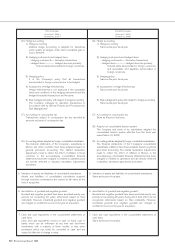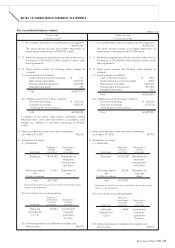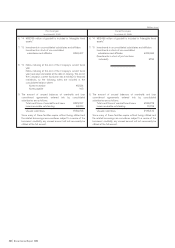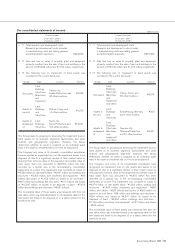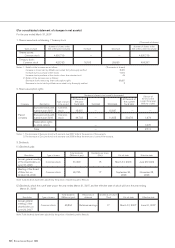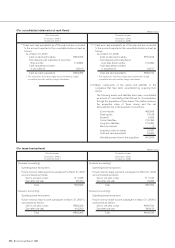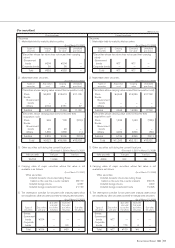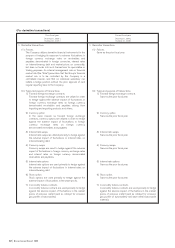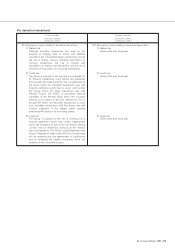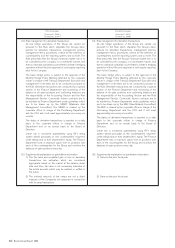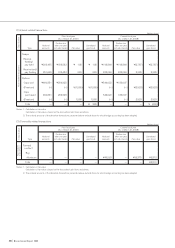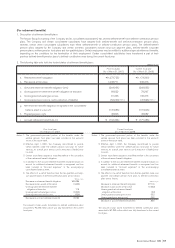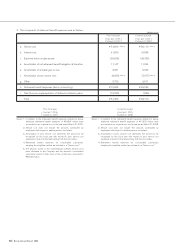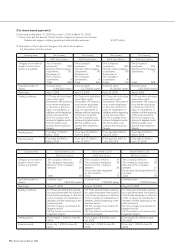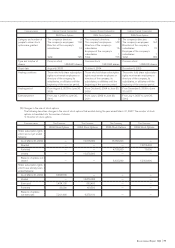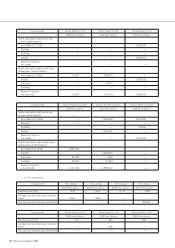Nissan 2008 Annual Report Download - page 64
Download and view the complete annual report
Please find page 64 of the 2008 Nissan annual report below. You can navigate through the pages in the report by either clicking on the pages listed below, or by using the keyword search tool below to find specific information within the annual report.
62 Nissan Annual Report 2008
Prior fiscal year Current fiscal year
From April 1, 2006 From April 1, 2007
[
To March 31, 2007
][
To March 31, 2008
]
1. Derivative transactions
(1) Policies
The Company utilizes derivative financial instruments for the
purpose of hedging its exposure to adverse fluctuations in
foreign currency exchange rates on receivables and
payables denominated in foreign currencies, interest rates
on interest-bearing debt and market prices on commodity,
but does not enter into such transactions for speculative or
trading purposes. An internal management rule on financial
market risk (the “Rule”) prescribes that the Group’s financial
market risk is to be controlled by the Company in a
centralized manner, and that no individual subsidiary can
initiate a hedge position without the prior approval of, and
regular reporting back to the Company.
(2) Types and purpose of transactions:
1) Forward foreign exchange contracts
Forward foreign exchange contracts are utilized in order
to hedge against the adverse impact of fluctuations in
foreign currency exchange rates on foreign currency
denominated receivables and payables arising from
importing and exporting products and others.
2) Currency option
In the same manner as forward foreign exchange
contracts, currency options are utilized in order to hedge
against the adverse impact of fluctuations in foreign
currency exchange rates on foreign currency
denominated receivables and payables.
3) Interest rate swaps
Interest rate swaps are utilized primarily to hedge against
the adverse impact of fluctuations in interest rates on
interest-bearing debt.
4) Currency swaps
Currency swaps are used to hedge against the adverse
impact of fluctuations in foreign currency exchange rates
and interest rates on foreign currency denominated
receivables and payables.
5) Interest rate options
Interest rate options are used primarily to hedge against
the adverse impact of fluctuations in interest rates on
interest-bearing debt.
6) Stock option
Stock options are used primarily to hedge against the
adverse impact of fluctuations in the share prices.
7) Commodity futures contracts
Commodity futures contracts are used primarily to hedge
against the adverse impact of fluctuations in the market
prices of precious metal (used as catalyst for emission
gas purifier of automobiles).
1. Derivative transactions
(1) Policies
Same as the prior fiscal year.
(2) Types and purpose of transactions:
1) Forward foreign exchange contracts
Same as the prior fiscal year.
2) Currency option
Same as the prior fiscal year.
3) Interest rate swaps
Same as the prior fiscal year.
4) Currency swaps
Same as the prior fiscal year.
5) Interest rate options
Same as the prior fiscal year.
6) Stock option
Same as the prior fiscal year.
7) Commodity futures contracts
Commodity futures contracts are used primarily to hedge
against the adverse impact of fluctuations in the market
prices of precious metal (used as catalyst for emission
gas purifier of automobiles) and base metal (automobile
material).
(For derivative transactions)


